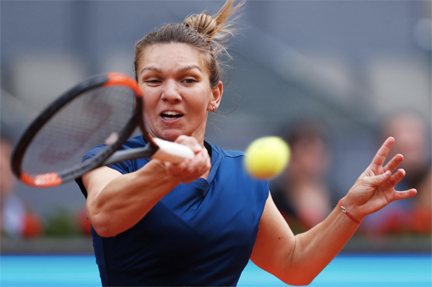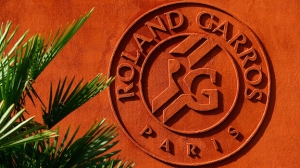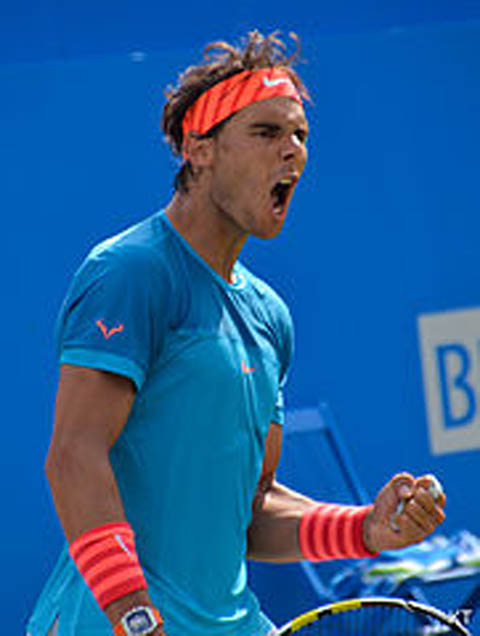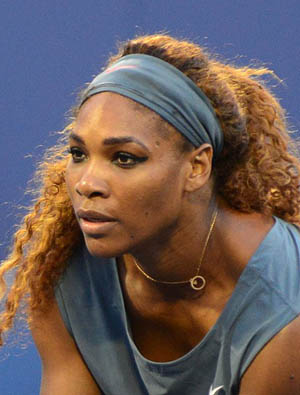This article appeared in LanguedocLiving.com
by Katrina Allen
There were two big questions at the start of the tournament this year. Could Novak Djokovic regain his form and test Rafael Nadal, the “King of Clay”? And could Serena Williams possibly come back after having had her first child in September and having played only a handful of matches since then?
But the tournament turned out to be far more exciting than that, with some nail-biting matches.
On the men’s side:
First, the French players;
Sadly, Lucas Pouille, the no 1 french player and 15th seed, didn’t make the last 16, being beaten by the hard-hitting Russian, Karen Khachanov, 6-3 7-5 6-3 in the third round.
Jeremy Chardy got himself a great scalp against 17th seed Tomas Berdych in a tense five-setter but then ran out of steam, losing to fellow Frenchman, Pierre-Hugues Herbert, in another five-setter in the next round. Herbert was beaten in turn by the giant 6’10” American, John Isner.
Poor Richard Gasquet was humiliated by Rafael Nadal early on in straight sets. He hadn’t won a single set against the Spaniard in 10 years so there really wasn’t much hope for him.
#newwave #lamonfstory pic.twitter.com/MhMYTWF4Ai
— Gael Monfils (@Gael_Monfils) December 30, 2017
The popular Frenchman Gael Monfils played David Goffin in a wonderfully exciting and beautiful match between two clay court specialists. Monfils had four match points but Goffin somehow pulled through. Rallies were gruelling, with Monfils doubled up more than once in the thrilling fourth set. Normally such a good sportsman, he, picked a fight with both the umpire and opponent and challenged several line calls, anything to waste time and get his breath back. Even his home crowd were booing him but then booing players seems to be a sport in itself at this event.
But the player of the tournament had to be world no 72 Italian, Marco Cecchinato, who had never before won a Grand Slam match. Back in 2016, he was nearly out of the game. Accused of match-fixing, he was fined $40,000.00 and banned for 12 months. The ban was overturned on a technicality but the rumours continue.
He won his first match in a tough five-setter and then carved his way through three top players in a row – Carrena Busta, David Goffin and then in a wonderful match against Novak Djokovic, winning a thrilling tiebreak 13-11 in the fourth set.
There was a fair bit of swearing from Djokovic who got a penalty for “verbal abuse”. I was impressed that the umpire understood Serbian, but then I read once that they are expected to know swear words in multiple tongues – I have visions of them poring over lists in the appropriate languages the night before matches.
In the semis, the Italian’s luck ran out against Dominic Thiem. He had set points in the second set tie break, couldn’t convert, and from then he was a broken man. He must have been both physically and emotionally exhausted by the end of it all. I love Cecchinato – he’s exciting and has style and flair but then he’s Italian, so he would, wouldn’t he?
The semis were a disappointment – both one-sided straight-setters, with Del Potro losing to Nadal in the other semi. Delpo just seemed completely at a loss as to how to play his opponent. Nadal just ran all the crunching forehands down until he forced a mistake, over and over again.
So, to the final – Rafa Nadal against Dominic Theim. Could the Austrian repeat his performance in Madrid where he beat the Spaniard in a best of three-setter? Nadal blamed the altitude which apparently made the ball fly and didn’t suit his game. Did you know that Madrid sits at over 600 metres? Me neither. But it’s hardly Everest. It seemed a rather lame excuse
Rafael Nadal was the ten times winner of the French Open and seemingly unbeatable at Roland Garros. It brings up the old question. How, oh how, do you beat him on clay over five sets?
His tactics are even more astute these days. He knows exactly when to come in. He’ll vary it with high-percentage vicious topspin forehands clearing the net by feet, dipping down short and rearing up, swerving snooker-style winners, dropshots exactly when needed and the occasional moonball to get himself back in position when pulled out wide.
I’m warming to Nadal. I used to think he was a boring topspin machine but he’s much more than that now.
And you could never accuse him of not trying; he runs and runs, and bellows with the effort of striking the ball and, oh boy, does he sweat. It drips off his nose as he’s about to serve but that doesn’t seem to put him off, which strikes me as a bit odd as he’s famously OCD. He even had his forearms bound with tape to absorb the perspiration running down his arms because his massive sweatbands weren’t doing the job.
The final was a pretty one-sided straight-setter to Nadal by 6-4 6-3 6-2. It was fairly straightforward in that Nadal played that high percentage tennis and ran virtually everything down and, for any chance to beat him, Theim had to take risks and inevitably made more mistakes.
To beat Nadal on clay you need to play lights-out tennis and that’s almost impossible over the best of five sets.
An extraordinary 11th Roland Garros title for Rafa.
So, to the women’s event:
The name on everyone’s lips was Serena Williams. Could she possibly come back and win after so little match practice and as a new mother. Not many mothers win Slams for obvious reasons; a reduced level of fitness, being kept awake at night and a realisation that there are more important things in life than winning tennis matches.
In the event, she was in the news less for her tennis than for her bizarre outfit, a black catsuit. I personally think it looked crazy – hardly sports gear – I’m amazed the tournament director allowed it but then you don’t mess with Serena!
Her first match was pretty dreadful, shots ungainly, movement sluggish, but she managed to muddle through. And then she came alive in the second round, beating Ashleigh Barty in three sets followed by a straight sets win over Julia Goerges.
Next up, Maria Sharapova – wow, exciting!. To say there’s been a bit of bad blood between these two players over the years is an understatement, which all added to the intrigue. And then Williams pulled out, citing a pulled pectoral muscle. What a disappointment.
As to the French women, most faded early on, although Caroline Garcia made it through to the fourth round but lost to the lower seeded Angelique Kerber in straight sets. It was unfortunate for the home fans that three Frenchwomen were bunched together in the draw so knocked one another out in early rounds, with Pauline Parmentier the player coming through. She then faced the second seed Caroline Wozniacki who beat her in two easy sets.
But the big match-up of the tournament came in the final; Roumanian no 1 seed Simona Halep against American no 10, Sloane Stephens. Halep had reached three Grand Slam finals and not won one of them. In last year’s final she was against Jelena Ostapenko. Halep was cruising – one set up and 3-0 in the second, when Ostapenko started thrashing the ball, firing off winners from everywhere.
Halep lost 6-3 in the third, bewildered and heartbroken.
Was she going to break her duck this time?
Stephens is one of my favourite women players. Her shots seem effortless and yet they pack a lot of punch. She has beautiful timing and she glides round the court as though on roller blades. She caresses the ball while Halep muscles it. Muscling it is tiring and not usually as effective but Halep was absolutely determined, running everything down.
Halep was down by a set and 2-0 and sensibly changed her tactics, charging the net when she needed to and finally, to the delight of the crowd, winning her first Grand Slam 3-6, 6-4, 6-1.
Roland Garros produced some classics this year. To play on clay is gruelling, and also a bit chess-like. It’s hard to put the ball away, so players have to think their way to a win as much as play their way through and the winners were the players who were able to do those two things the best.
Incidentally, there was good news for the home crowd when the French pair Mahut and Herbert won the doubles against Marach and Pavic in the finals by 6-2, 7-6 to become just the third all-French team in the Open era t o win at Roland Garros.
o win at Roland Garros.
Next stop, the grass court season. Queen’s, Wimbledon, strawberries, rain delays, feet up on the sofa – you know the drill.
Katrina Allen is a former Junior Wimbledon and senior tournament player. She also played real tennis, the original form of the game, at top level.
katrinaallen.co.uk
@katrinaallen21


